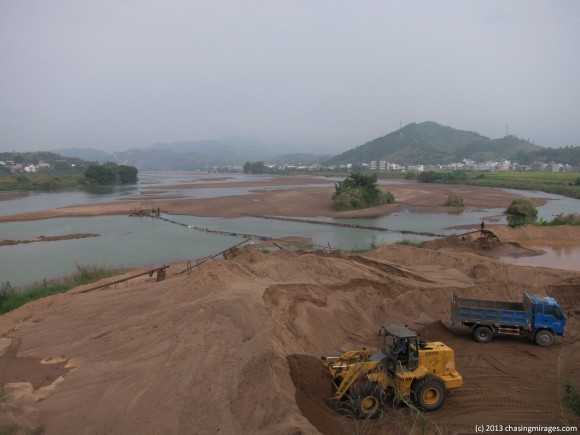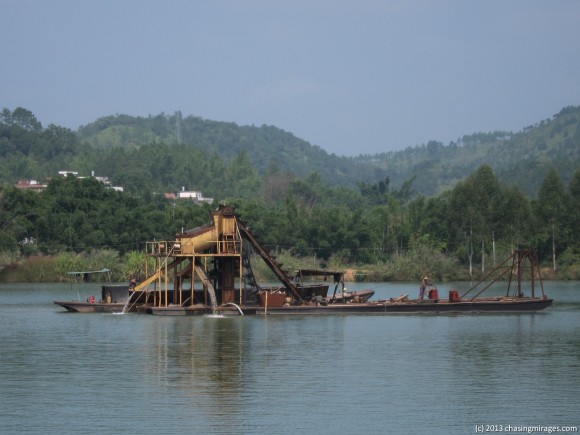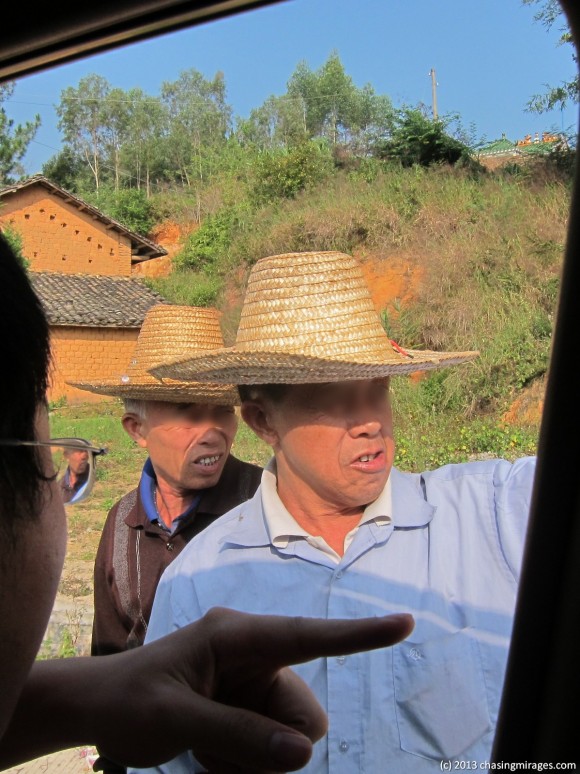Small hydropower, roughly defined as having 300 kilowatts to 30 megawatts of electricity generation capacity, is often lauded as a low environmental impact solution for rural electrification.
In some cases, small hydropower may be useful and sustainable. However, like large hydropower, its deployment must be planned carefully. Small hydropower plants with reservoirs cause the same type of damage dealt by larger plants, including flooding of productive land, fragmentation of river ecosystems, and alteration of natural flows.
In-stream hydropower plants, which don’t require reservoirs, generate electricity by diverting water from the natural stream into sloped pipes that lead to turbines. An important requirement for sustainable operation of in-stream hydropower plants is the maintenance of minimum ecological flow in the natural stream.
The over-deployment and poor planning of small hydropower has irreparably destroyed river ecosystems all over China, and Guangdong Province is no exception.
In Huizhou (æƒ å·ž) near the town of Baokou (寶å£éŽ®), we drove along the Xizhijiang River (西æžæ±Ÿ), an important tributary of Dongjiang, and observed a total of 7 in-stream small hydropower stations within a 15 kilometer stretch. At least two of them diverted 100% of the water for generation, exposing hundreds of meters of riverbed. I can’t imagine any aquatic life surviving such extreme habitat alteration.
The Dongjiang’s main course is also heavily exploited for hydropower. A total of 14 hydropower stations are planned along Dongjiang in stairstep formation, literally transforming the river from a continuous, turbulent stream into a series of stagnant pools. All of these plants except one are small hydropower stations with generation capacities of less than 30 MW. The portion of Dongjiang within Heyuan (æ²³æºï¼‰ has a particularly high density of stairstep hydropower plants – a total of 11 within a 250 km run of the river. We believe that 10 of these plants have been completed or are nearing completion.

depressingly silted Dongjiang River between Lankou hydropower station (è—å£æ°´é›»ç«™) and Luoyingkou hydropower station (羅營å£æ°´é›»ç«™)
One of the most obvious effects of damming the river is increased sedimentation. Because the water’s flow rate is dramatically reduced, much of the silt that would normally be carried a long distance, perhaps all the way to the mouth of the Pearl River near Hong Kong, settles out upstream. Upstream sedimentation obstructs the transport of nutrients, reduces the water quality in upstream areas, and, ironically, reduces the generation capacity of hydropower plants. Reservoirs must be continuously dredged, at high cost, to maintain these plants’ planned generation capacity. Unfortunately, these costs are generally ignored in the process of designing and approving these projects.
Although many of these hydropower plants have yet to commence full operation, extensive sections of the river are already filled in by silt. Rather than an expected lifespan of several decades, it appears that without intense dredging, these hydropower plants have reached the end of their usefulness before they’re even completed.

sand extracting platforms are ubiquitous upstream of Luoyingkou hydropower station (羅營å£æ°´ç«™)
Upstream of Luoyingkou hydropower station, we reached an impressively long bridge composed of hundreds of narrow wooden slats. A couple of locals stopped to chat with us. They told us that before construction on the hydropower plants started, the river had been clean enough to drink from, and fish were abundant. Now, they could only drink well water and could no longer depend on fish as a food source or a way to make a living.
Dongjiang’s hydropower development illustrates another great Chinese irony. How can a nation that places such emphasis on planning and “scientific development” (科å¸ç™¼å±•è§€) pursue such poorly planned, scientifically impoverished projects?





Leave a Reply